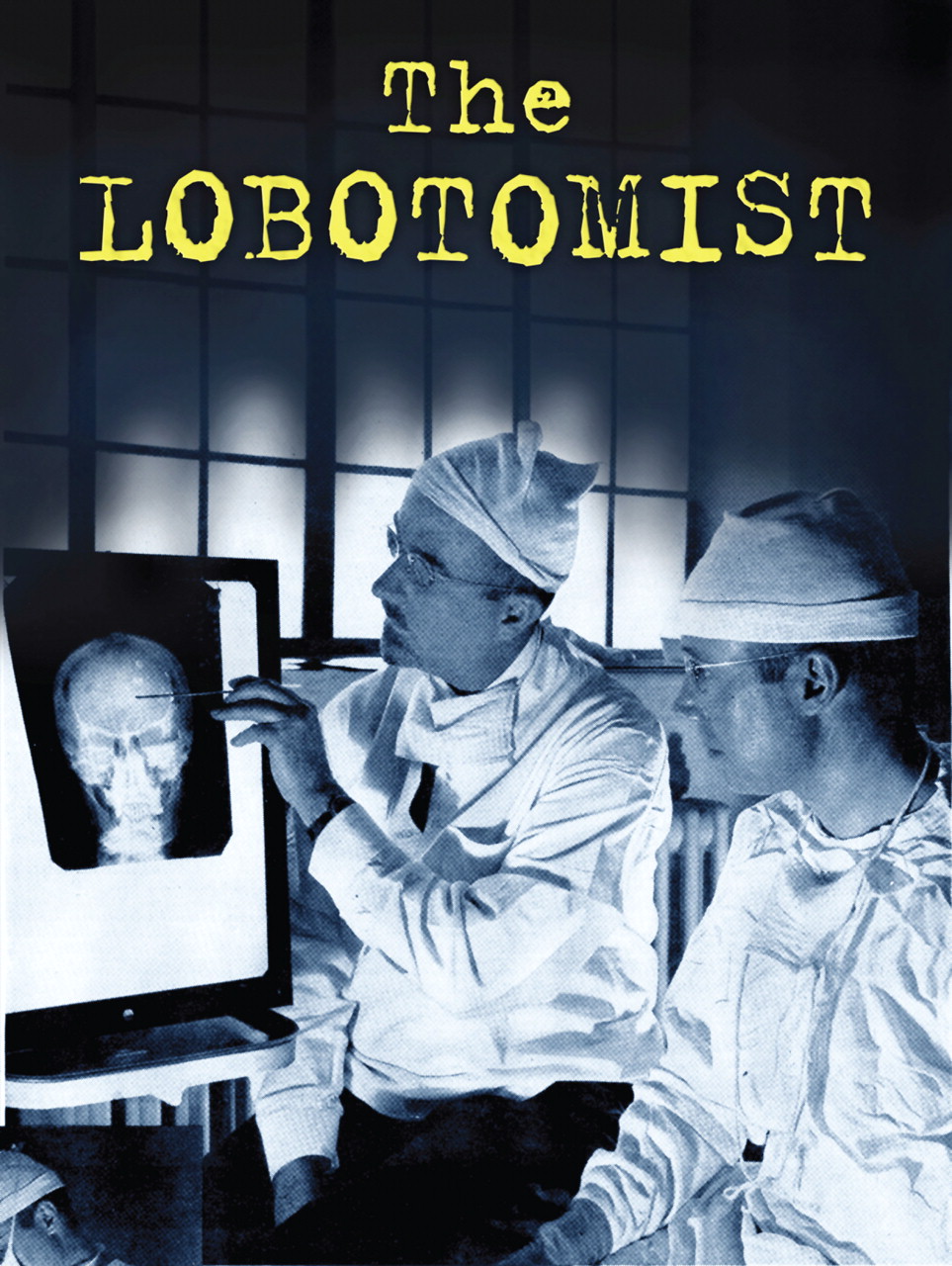If someone today were to suggest a frontal lobotomy as a means of relieving mental anguish, the responses might include sardonic laughter, revulsion, or even outrage. But when we consider the circumstances that led to its invention and practice—the lack of consistently efficacious treatment for the severe and persistently mentally ill, the push of society to hide such patients in asylums deep in the countryside where they could be forgotten, and the ever-dilapidated squalor in which patients lived in such places—the moral high ground on which we might have stood scoffing at such a barbaric practice begins to shake, and we find revealed a more complex and disconcerting picture of the hopelessness of patients and their families, of the economic burdens on private and public sectors alike, and of the drive of physicians to relieve these patients of their emotional burdens, regardless of the cost.
“The Lobotomist,” a PBS special released as part of the
American Experience series, examines these complexities through a survey of and commentary on the professional career of Walter Freeman, M.D., Ph.D.
Freeman was a neurologist, and in 1924, at 28, he was the youngest laboratory director appointed at St. Elizabeth’s Hospital—an institution for the chronically mentally ill in Washington, D.C. After seeing the conditions in which the 5,000 patients at St. Elizabeth’s lived, he began what proved to be a futile neuroanatomical sectioning of the brain to look for some hint of neuropathology that might underlie the signs and symptoms of mental illness. Then, quite by accident it seems, he discovered the work of Antonio Egas Moniz, a Portuguese neurologist who had removed parts of the frontal lobes (a prefrontal leucotomy) in 12 patients as a means of relieving mental distress. Moniz reported substantial improvement in a third of these patients, and this provided the impetus for Freeman to learn, develop, adapt, and ultimately champion the frontal lobotomy (eventually called the transorbital lobotomy, as Freeman had altered the route of entry into the brain from above the frontal lobes to from below via the orbital cavity). He practiced this procedure from 1946 until 1967, when he was stripped of his medical license. He spent his final years searching for patients who had undergone the procedure in what appears to have been an attempt at self-validation—to convince others, if not himself, that his work was a step forward in the treatment of the mentally ill, rather than a medical massacre.
The program touches upon several themes—Was Freeman a devoted and pioneering physician obsessed with relieving the suffering of mental illness, or was he a megalomaniacal and grandiose fame monger who championed his treatment for his own gain and ignored the consequences for his patients? Was the lobotomy a reasonable attempt at treatment at a time when little could be done for these patients, or was it an atrocity from the beginning? Did mainstream medicine act responsibly in allowing the treatment to continue and then by condemning it when the evidence bore out the true outcomes, or was it swept away in a mass hysteria of hope and fanfare fueled by both the media and Freeman himself?—and raises them successfully in commentary by Freeman’s sons, author Jack El-Hai (who wrote the book of the same name), sociology professor Andrew Scull, writer Robert Whitaker, medical historian Edward Shorter, professor of neuroscience Elliot Valenstein, and others. But these dilemmas prove too intricate for a 1-hour television program, and in many ways, the viewer is left only with a sense of discord. This is not to say that the program fails in this regard, but only that, by a function of its length, it must inevitably sacrifice depth for breadth in order to present the scope of the dichotomies.
One of the more poignant themes presented is also the grandest—What makes us human? Our thoughts and feelings do exactly that, but they are also what cause suffering in mental illness. When confronted with interminable suffering, our own response can overshadow an appreciation for the individual, and it was likely this empathic vigor that allowed Freeman to ignore the consequences of his procedure and drive ahead. Similarly, identification with the suffering loved one allowed family members to send them for lobotomies and then to thank Freeman with gushing praise for the incapacitated and childlike person who was returned to them, perhaps, as Scull suggests, to avoid acknowledging that they have damaged, rather than helped, their loved one. And perhaps most strikingly, this altruistic fury is likely what allowed the greatest scientists and physicians of the day not only to approve of Freeman’s work, but also to bestow on Moniz the Nobel Prize in Medicine in 1949 for developing the procedure. Whitaker comments, “The lesson here is not how a man can go off the rails but is how science can go off the rails.” And it is true that—from the rage to cure, the need for protection from our own mistakes, or the need to stand validated by communal agreement—science did indeed go off the rails. But rather than look back with condemnation, the film tries to convey just how murky the landscape was, to convey that Freeman, the families of his patients, and the medical community were sorting through powerful and at times overwhelming emotions and ideas that compelled the hopes of everyone associated with the lobotomy forward, despite the evidence that suggested that the hope was ill-founded.
While serious attempts are made at giving a balanced presentation, the program does tend to more effectively portray the negative aspects of these issues. Having people describe Freeman’s sense of devotion and commitment to the mentally ill pales in comparison to the sense of atrocity evoked when, in an attempt to expand the procedure to a new population, he performs 19 lobotomies on children, one of whom was 4 years old. Freeman’s devotion to his procedure, rather than to his patients, is particularly chilling when one of his child patients, Howard Dully, reads Freeman’s own notes of his case and they reveal nothing other than a normal child, pathologized by Freeman in an attempt to justify his procedure. Although the notes essentially condemn Freeman to the realm of fanatic, blinded to contrary evidence, in general there is a catastrophizing of the negative components of this story that is moving but somehow lopsided. It is perhaps most aptly summed in the final black screen of the film, when on the screen flashes, “Lobotomy, in a modified form, is still done in rare cases of obsessive compulsive disorder at hospitals around the world,” lumping all surgical interventions (and they must mean cingulotomy here) directed toward psychiatric disorders as equivalent to, and in fact indistinguishable from, lobotomy. In the end, it is a disappointment that a program that captivatingly presents the rich and cloudy picture of such a controversial physician and treatment within the context of history would then leave such a bitter and somewhat misleading taste in the mouth at the final moments, since it suggests that medicine has failed to learn from its mistakes. Nevertheless, the program is an important contribution to the historical record of psychiatric care in this country, and it is an eloquent survey of some of the ethical dilemmas that accompanied the care of the mentally ill at this time.


